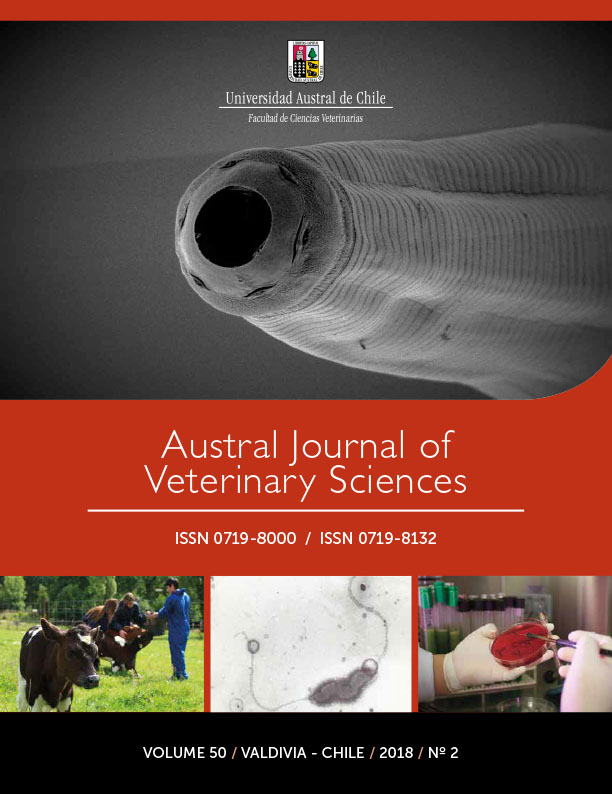Effect of two oil types and energy levels on broiler performance, carcass quality and skin pigmentation
Contenido principal del artículo
Resumen
This study evaluated different levels of metabolisable energy (ME) and two oil types: crude soybean oil (CSO) and acidulated soybean oil (ASO), in sorghum-soybean meal diets for broilers. One thousand and eight unsexed Ross 308 chicks aged 1 to 49 days old were used in a factorial arrangement design 2x3. The first factor corresponded to the oils (CSO and ASO) and the second factor corresponded to the ME levels (high, medium and low) in the initiation (1-10 days), growing (11-25 days) and finishing (26-48 days) feeds, with a 90 kcal/kg reduction. The treatments were as follows: (1) CSO with 3010, 3175 and 3200 kcal/kg; (2) CSO with 2920, 3085 and 3110 kcal/kg; (3) CSO with 2920, 3085 and 3200 kcal/kg; (4) ASO with 3010, 3175 and 3200 kcal/kg; (5) ASO with 2920, 3085 and 3110 kcal/kg; and (6) ASO with 2920, 3085 and 3200 kcal/kg. The treatments with high and medium levels of ME (P<0.05) were higher. The carcass weight and skin pigmentation when cold were better in broilers fed with high and medium levels of ME (P<0.05). No effect (P>0.05) between oil types was found. It can be concluded that it is feasible to replace CSO by ASO and to reduce 90 kcal/kg of ME from the recommended amount for the breed during the initiation and growing stages, without affecting their performance.

